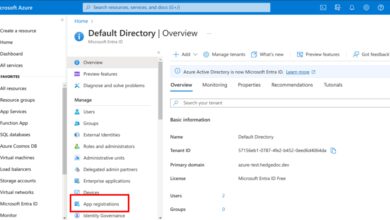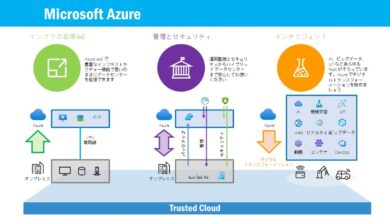Azure Latch Codes: 7 Powerful Secrets You Must Know Now
Ever stumbled upon the term ‘azure latch codes’ and wondered what it actually means? You’re not alone. While it sounds like a high-tech security feature or a cryptic Azure function, the reality is both more nuanced and fascinating. Let’s decode this step by step.
Understanding Azure Latch Codes: What Are They?

The term azure latch codes doesn’t refer to an officially documented Microsoft Azure service or feature. Instead, it’s likely a conflation or misinterpretation of several Azure-related concepts involving access control, state management, or security tokens. However, by dissecting each component—’Azure’ and ‘latch codes’—we can infer a plausible technical context where such a phrase might apply.
Breaking Down ‘Azure’
Azure is Microsoft’s cloud computing platform, offering over 200 services including virtual machines, databases, AI tools, and identity management. It’s the backbone for enterprise applications, hybrid infrastructures, and scalable web services.
- Azure Active Directory (Azure AD) handles authentication and authorization.
- Azure Key Vault secures cryptographic keys and secrets.
- Azure Logic Apps and Functions manage workflow triggers and state transitions.
These services often involve mechanisms that ‘latch’ or lock states during processes—hence the possible origin of ‘latch codes.’
What Does ‘Latch Codes’ Mean?
In electronics and programming, a ‘latch’ is a circuit or software mechanism that holds a state until reset. A ‘latch code’ could refer to a temporary token, flag, or access key that maintains a system in a specific mode—like a locked or unlocked state.
- In firmware, latch codes prevent race conditions.
- In security, they may represent one-time passcodes (OTPs) or session locks.
- In cloud workflows, they can act as state markers in long-running processes.
“The idea of a ‘latch’ in software is about maintaining state integrity—especially in distributed systems like Azure.” — Cloud Architecture Best Practices, Microsoft Docs
Azure Latch Codes in Identity and Access Management
One of the most plausible interpretations of azure latch codes lies within Azure’s identity ecosystem. When users or services authenticate, temporary tokens or session flags are generated—these can be seen as ‘latch codes’ that grant or deny access until expiration or revocation.
Azure AD Conditional Access and Session Controls
Microsoft Azure AD uses conditional access policies to enforce rules based on user behavior, location, or device compliance. When a user logs in from an untrusted network, Azure may issue a ‘grant control’ that acts like a latch—requiring multi-factor authentication (MFA) before access is ‘unlatched.’
- These controls can include sign-in frequency, app enforcement, and session lifetime limits.
- A ‘latch code’ here could metaphorically represent the temporary approval token issued after MFA.
- For example, a smartcard PIN or FIDO2 key response might be considered a form of latch code.
Learn more about Azure AD Conditional Access: Microsoft Learn – Conditional Access.
Privileged Identity Management (PIM) and Just-In-Time Access
Azure PIM allows users to request elevated permissions for a limited time. Once approved, the user is ‘latched’ into a privileged role. The approval itself—often time-bound and audited—functions like a temporary latch code.
- Access is ‘latched’ open only after approval and MFA.
- The system automatically ‘unlatches’ (revokes access) after the set duration.
- Every activation is logged, providing an audit trail of who used which ‘latch code’ and when.
This model reduces standing privileges and enhances security—aligning with zero-trust principles.
Azure Latch Codes in Workflow Automation
In Azure Logic Apps and Azure Functions, orchestrating long-running processes often requires maintaining state across triggers and actions. Some of these mechanisms resemble ‘latching’ behavior, where a process waits for a signal before proceeding.
Durable Functions and the Orchestration Pattern
Azure Durable Functions extend Azure Functions by adding stateful workflows. In this model, an ‘orchestrator function’ can ‘latch’ a process until an external event occurs—like a human approval or a payment confirmation.
- The function waits in a suspended state, effectively ‘latched’ until a callback is received.
- The callback URL or event token could be considered a ‘latch code’ that resumes the workflow.
- This prevents race conditions and ensures process integrity.
Explore Durable Functions: Azure Durable Functions Documentation.
Logic Apps and Approval Workflows
Azure Logic Apps supports approval workflows where a task is ‘latched’ until a user responds. The approval link sent via email contains a unique token—this token is essentially a ‘latch code’ that, when used, unlocks the next step in the process.
- The token is time-limited and single-use, enhancing security.
- If not used, the latch remains closed, and the workflow times out.
- These tokens are generated using secure hashing and are tied to the user’s Azure AD identity.
“Workflow latching ensures that critical business processes don’t proceed without proper authorization.” — Azure Integration Services Guide
Security Implications of Azure Latch Codes
If we treat ‘azure latch codes’ as temporary access tokens or state locks, their security becomes paramount. A compromised latch code could allow unauthorized access to sensitive systems or data.
Token Expiry and Rotation
Any system using latch-like mechanisms must enforce strict token lifetimes. Azure AD tokens, for example, typically last 60-90 minutes. Prolonged sessions increase risk.
- Short-lived tokens reduce the window of exposure.
- Automatic rotation ensures that even if a latch code is intercepted, it quickly becomes invalid.
- Azure AD supports token lifetime policies for custom configurations.
Monitoring and Auditing Latch Code Usage
Microsoft Sentinel (Azure’s SIEM solution) can monitor authentication events, including PIM activations and conditional access grants—potential ‘latch code’ usages.
- Alerts can be set for unusual activation patterns.
- Audit logs track who requested access, when, and from where.
- Integration with Azure Monitor provides real-time visibility.
Set up monitoring: Microsoft Sentinel Documentation.
Azure Latch Codes in IoT and Device Management
In Azure IoT Hub, devices often operate in a ‘latched’ state—waiting for a command or update. A ‘latch code’ could refer to a device twin property or a cloud-to-device message token that triggers an action.
Device Twins and Desired State
A device twin in Azure IoT is a JSON document that stores device state, including metadata, configurations, and conditions. When a ‘desired property’ is updated, the device may ‘latch’ into a new mode—like entering maintenance or updating firmware.
- The update command acts as a latch signal.
- The device acknowledges the change, closing the latch loop.
- This ensures consistency across distributed IoT networks.
Firmware Updates and Secure Boot
During over-the-air (OTA) updates, Azure IoT devices use secure boot mechanisms. A cryptographic signature or hash verification can be seen as a ‘latch code’ that allows the new firmware to run.
- If the code doesn’t match, the latch remains closed, and the device reverts to the previous version.
- This prevents malicious firmware from taking control.
- Azure Device Update service manages this process at scale.
Learn about secure updates: Azure IoT Firmware Update Tutorial.
Common Misconceptions About Azure Latch Codes
Because ‘azure latch codes’ isn’t an official term, several misconceptions exist. Clarifying these helps avoid confusion in technical discussions.
It’s Not a Microsoft-Defined Feature
There is no Azure service named ‘Latch Codes.’ The term is likely used informally by developers or in internal documentation to describe state-holding mechanisms.
- Microsoft uses terms like ‘tokens,’ ‘claims,’ ‘grants,’ and ‘secrets’ instead.
- Searching for ‘azure latch codes’ in official docs yields no direct results.
- Always refer to Microsoft’s glossary for accurate terminology.
It’s Not Related to Physical Latches or Biometrics
Despite the name, ‘latch codes’ in Azure aren’t tied to physical locks or biometric systems—unless integrated via custom apps.
- Azure AD supports biometric authentication through Windows Hello or FIDO2, but these are not called ‘latch codes.’
- The term should not be confused with smart lock systems that use Azure IoT.
- Context matters: in a building access system using Azure, ‘latch code’ might refer to a virtual key, but it’s not a cloud-native concept.
Best Practices for Implementing Latch-Like Mechanisms in Azure
Even if ‘azure latch codes’ isn’t a formal term, the concept of state latching is critical in secure, reliable cloud applications. Here’s how to implement it correctly.
Use Short-Lived Tokens with MFA
Whenever a system requires a ‘latch’ for access, ensure the token or approval is time-bound and requires multi-factor authentication.
- Set token lifetimes to 15-60 minutes.
- Enforce MFA for all privileged operations.
- Use Azure AD Identity Protection to detect risky sign-ins.
Leverage Azure Key Vault for Secure Storage
If your application generates temporary codes or tokens, store them securely using Azure Key Vault.
- Never hardcode secrets in your application.
- Use managed identities to access Key Vault without exposing credentials.
- Enable logging and access policies to monitor usage.
Secure your secrets: Azure Key Vault Overview.
Design for Idempotency and State Consistency
Latch mechanisms must handle retries and failures gracefully. A user should not be able to ‘unlatch’ a process twice.
- Use idempotent operations in APIs and workflows.
- Track state in durable entities or database records.
- Implement compensation logic for failed transactions.
Future Trends: Will Azure Formalize Latch Codes?
As cloud systems grow more complex, the need for explicit state management and secure gating mechanisms will increase. While Microsoft may never adopt the term ‘latch codes,’ the underlying patterns are becoming standard.
Zero Trust and Dynamic Access Control
Zero Trust architectures require continuous verification. Future Azure features may introduce more granular, context-aware ‘latches’ that adapt in real time.
- AI-driven risk assessment could dynamically adjust access latches.
- Behavioral analytics might tighten or loosen latches based on user patterns.
- Integration with Microsoft Entra (formerly Azure AD) will deepen.
Blockchain and Immutable Latch Logs
For high-assurance environments, Azure may integrate blockchain-like ledgers to record latch activations—ensuring tamper-proof audit trails.
- Azure Confidential Ledger already offers immutable logging.
- Future systems could log every ‘latch code’ usage on a decentralized ledger.
- This would enhance compliance for finance, healthcare, and government sectors.
What are azure latch codes?
Azure latch codes are not an official Microsoft Azure feature but a conceptual term used to describe temporary access tokens, state locks, or approval mechanisms in Azure services like Azure AD, Logic Apps, or IoT Hub. They function like digital keys that ‘latch’ a process or access state until a condition is met.
Are azure latch codes secure?
When implemented correctly—using short-lived tokens, MFA, and audit logging—the mechanisms behind ‘azure latch codes’ are highly secure. However, poor implementation (like long-lived tokens or lack of monitoring) can introduce risks.
How do I implement a latch mechanism in Azure?
You can simulate a latch using Azure Logic Apps approval workflows, Durable Functions wait-for-event patterns, or Azure AD Conditional Access policies. Always combine with Azure Key Vault for secret management and Microsoft Sentinel for monitoring.
Can I use azure latch codes for IoT devices?
Yes, in IoT scenarios, a ‘latch code’ can represent a command or firmware update token sent via Azure IoT Hub. The device only acts when the correct cryptographic signature or token is received, effectively ‘unlatching’ the update process.
Is there official Microsoft documentation on azure latch codes?
No, ‘azure latch codes’ is not an official term in Microsoft documentation. However, the underlying concepts are covered under Azure AD, Azure Functions, Logic Apps, and IoT Hub guides.
So, while ‘azure latch codes’ might not be a term you’ll find in Microsoft’s official glossary, the concept is very much alive in the way Azure manages access, state, and security. Whether it’s a PIM activation, a Logic App approval, or an IoT command, the idea of a temporary, secure ‘latch’ is central to modern cloud architecture. By understanding these patterns, you can design more resilient, secure, and user-friendly systems on Azure. The key is to focus not on the label, but on the underlying mechanism—and ensure it’s built with security, auditability, and clarity in mind.
Further Reading:









